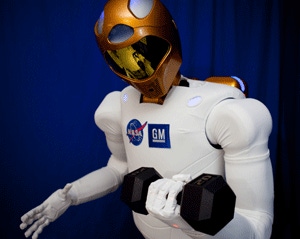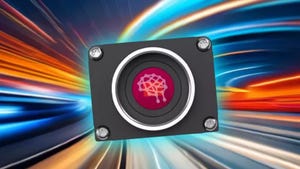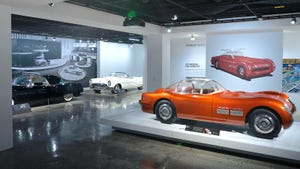May 7, 2010

NASAwill launch the first human-like robot to space later this year to become apermanent resident of the International Space Station. Robonaut 2, or R2, wasdeveloped jointly by NASA and General Motors under a cooperative agreement todevelop a robotic assistant that can work alongside humans, whether they areastronauts in space or workers at GM manufacturing plants on Earth.
"GM and NASA both share the samevision that one day humans and robots will work together side by side and in asafe way. We were struck with the rangeof the tasks that Robonaut could do in helping astronauts, and the similarityof those tasks to the range of assembly tasks that our people need help with. Thatsimilarity and common ground really fostered the relationship that hasculminated in what you see demonstrated here today," says Dr. RolandMenassa, GM's Advanced Robotics Manager in the Manufacturing Systems ResearchLab.
The 300-lb R2 consists of a head and a torsowith two arms and two hands. R2 will launch on Space Shuttle Discovery as partof the STS-133 mission planned for September. Once aboard the station,engineers will monitor how the robot operates in zero gravity.
"This project exemplifies thepromise that a future generation can have robots both in space and on Earth,not as replacements for humans but as companions that can carry out keysupporting roles," says John Olson, director of NASA's Exploration SystemsIntegration Office at NASA Headquarters in Washington. "The combinedpotential of humans and robots is a perfect example of the sum equaling morethan the parts. It will allow us to go farther and achieve more than we canprobably even imagine today."
The dexterous robot not only lookslike a human but is also designed to work like one. With human-like hands andarms, R2 is able to use the same tools station crew members use. In the future,the greatest benefits of humanoid robots in space may be as assistants orstand-ins for astronauts during spacewalks, or for tasks too difficult ordangerous for humans. For now, R2 is still a prototype and does not haveadequate protection needed to exist in the extreme temperatures outside thespace station.
Testing the robot inside the station willprovide an important intermediate environment. R2 will be tested inmicrogravity and subjected to the station's radiation and electromagneticinterference environments. The interior operations will provide performancedata about how a robot may work side-by-side with astronauts. As developmentactivities progress on the ground, station crews may be provided hardware andsoftware to update R2 to enable it to do new tasks.
R2 is undergoing extensive testingin preparation for its flight. Vibration, vacuum and radiation testing alongwith other procedures being conducted on R2 also benefit the team at GM. Theautomaker plans to use technologies from R2 in future advanced vehicle safetysystems and manufacturing plant applications.
"The extreme levels of testingR2 has undergone as it prepares to venture to the International Space Stationare on par with the validation our vehicles and components go through on thepath to production," says Alan Taub, vice president of GM's globalresearch and development. "The work done by GM and NASA engineers alsowill help us validate manufacturing technologies that will improve the healthand safety of our GM team members at our manufacturing plants throughout theworld. Partnerships between organizations such as GM and NASA help ensure spaceexploration, road travel and manufacturing can become even safer in thefuture."
About the Author(s)
You May Also Like





